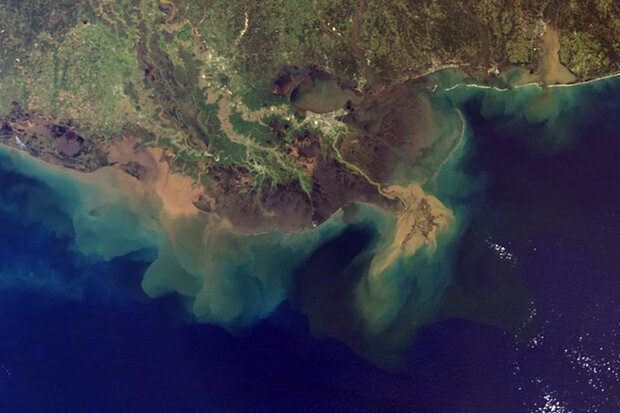River runoff creates a buffer zone for ocean acidification in the Gulf of Mexico

<p>Alkaline runoff from the Mississippi River might counteract ocean acidification. Credit: NASA MODIS</p>

Alkaline runoff from the Mississippi River might counteract ocean acidification. Credit: NASA MODIS
A new study by scientists at NOAA’s Atlantic Oceanographic and Meteorological Laboratory (AOML) and Northern Gulf Institute (NGI) has revealed the alkalinity of river runoff to be a crucial factor for slowing the pace of ocean acidification along the Gulf of Mexico’s northern coast. This valuable, first-time finding may be indicative of ocean carbon chemistry patterns for other U.S. coastal areas significantly connected to rivers.
The research, published in Geophysical Research Letters, used models to identify the main drivers of ocean acidification for different regions of the gulf. They provide evidence that river alkalinity has counteracted the progression of ocean acidification for coastal areas along the gulf.
Ocean acidification refers to a reduction in seawater pH over time, mainly caused by increased levels of carbon dioxide in the atmosphere being absorbed into the ocean. Seawater chemically reacts with carbon dioxide to form carbonic acid, causing the ocean to become more acidic.
Read more at the link below.